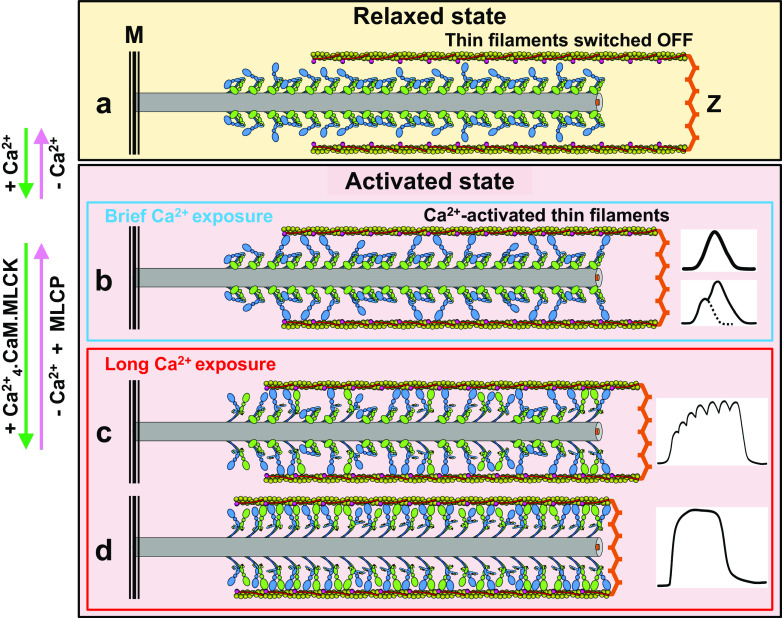Fig. 11.
Swaying-swinging, tilting crossbridge-sliding filament mechanism (cf. (Huxley 1969, 2004b)). The number of recruited heads producing force in the tarantula striated muscle half-sarcomere under contraction according to the CPA mechanism (Fig. 10) depends on the time [Ca2+] is below the threshold, as in the relaxed state (a), or above it, as in activated state (b–d). In relaxed state (a) about half of the total number of heads (free heads) could be released swaying heads while about the other half are docked swaying heads and docked blocked heads (Fig. 7d and 10). The released swaying heads move out with a swaying duty cycle Ds = 0.6 (i.e. they are released 60% of cycle time, see text) (Fig. 7b). As thin filaments are not Ca2+-activated (Fig. 7c1) these heads cannot bind actin neither produce force. When [Ca2+] is high thin filaments become activated (b–d, Fig. 7 c2). For brief Ca2+ exposures (blue box), only the detached swaying heads can bind to the thin filament producing force in twitches and twitch summation (b), while for longer Ca2+ exposures CaM.MLCK (red box) become activated (Ca2+ 4.CaM.MLCK). Thus, blocked heads are recruited by phosphorylation swaying away binding to actin, potentiating force in unfused tetani (c). With a much longer Ca2+ exposure, many more of the remaining blocked heads become recruited, producing near maximal force in fused tetani (d). Tarantula thick filaments are ~5 μm long with a ~210-nm central bare zone, so, since there are four free (blue) and blocked (green) heads per 14.5 nm crown, each filament halve has ~1320 free and blocked heads. To simplify, only heads from 20 crowns (1 crown per repeat) are shown on each filament segment halve. From the four IHMs on each crown, only the top and bottom ones are shown. M M-band, Z Z-disk. Not to scale (Padrón 2007)

